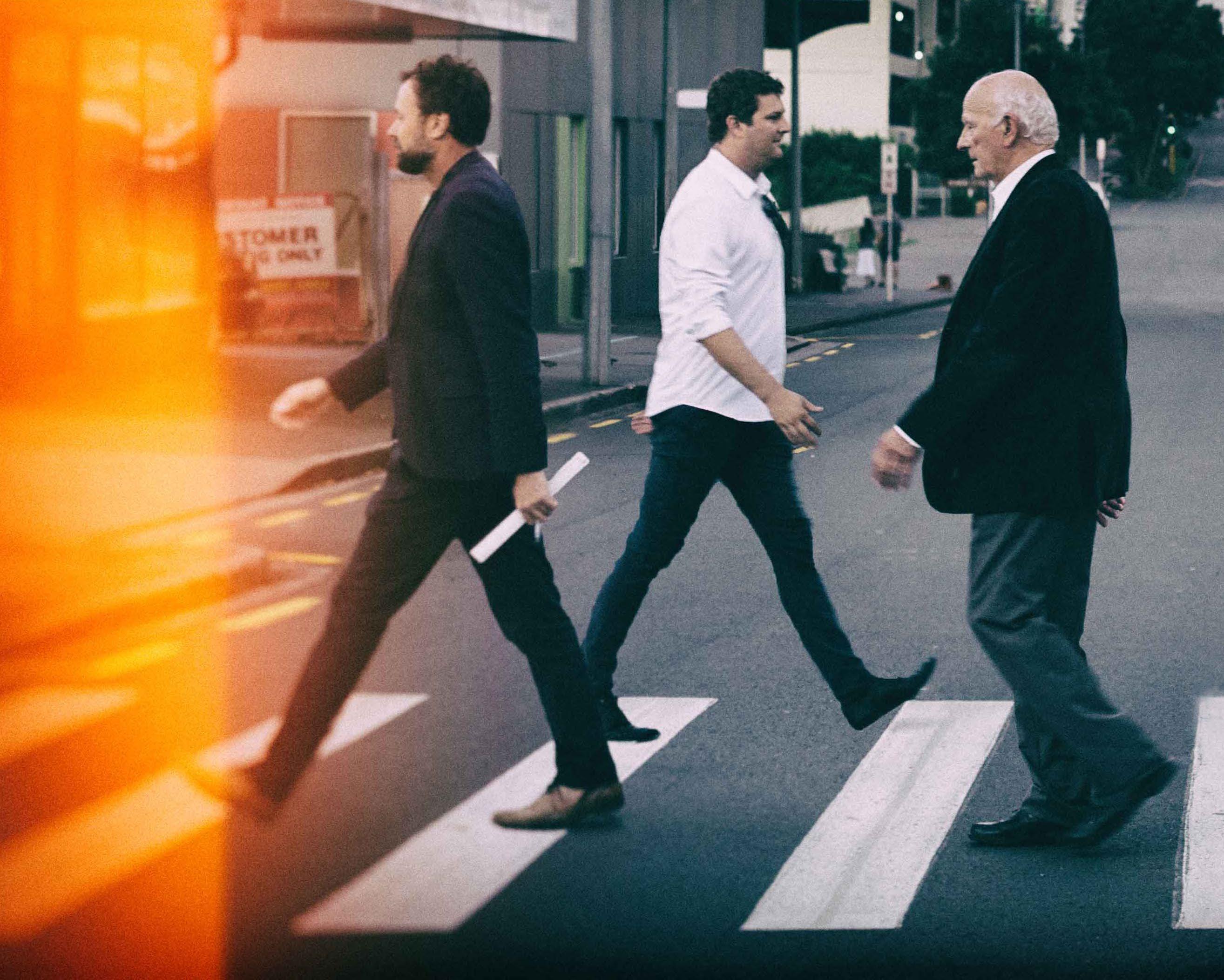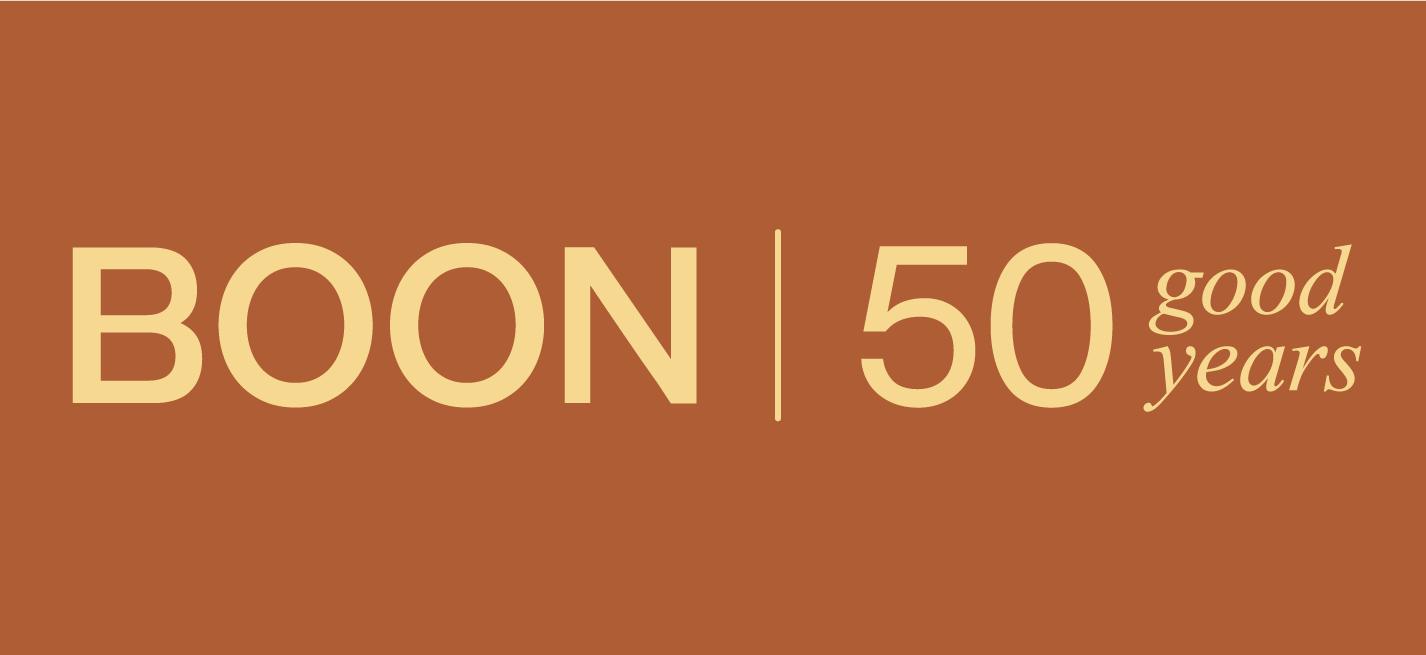
6 minute read
BOON - A creative and cultural evolution.
Words by Virgina Winder
Over the last 50 years, New Plymouth design company BOON has evolved creatively and culturally by adopting new technology, diversifying to be multidisciplinary, and effectively changing the Taranaki landscape on the way.
Founder Terry Boon, former director Paul Goldsmith and current directors Murali Bhaskar and Glenn Brebner talk of the changes the team has faced and embraced since 1974.
That’s when Terry went out on his own and bought an old dairy on the corner of Gover and Courtenay Sts, which is still the studio premises today.
“It went from the little corner dairy and then we added the bigger building to the back of it with the high stud and open plan office.”
He says the move from smaller individual offices to a collaborative shared space has been good for staff camaraderie and teamwork. “If you need privacy, you go into one of the meeting rooms.”

The 86-year-old still has his own space at the office and, most days, pops in for a few hours to work on projects.
After many iterations of the architect firm’s name – ten years ago it was Boon Goldsmith Bhaskar Brebner Team
Architects – it’s now simply called BOON.
“I’m pretty chuffed about that,” says Terry.
Not only does the four-letter word have two “Os” that appear as eyes looking into the future, but according to the Oxford Dictionary, boon means advantage or blessing.
The firm has been a boon for New Plymouth, which Terry says has evolved reasonably sensibly on the architectural front with input from many “design thinkers”.
But there is one project he wishes hadn’t been quite so sensible.
To make a social comment about not pulling down heritage buildings, Boon and Goldsmith designed New Plymouth’s Clock tower on a lean.

However, the New Plymouth District Council opted for the safer, more classic version, which the firm is still proud of.
Other standout projects for Terry include redesigning the Bowl of Brooklands, transforming the old Regent Cinema “bug house” into the Govett-Brewster Art Gallery and saving the New Plymouth Opera House (now TSB Showplace).
One of Paul Goldsmith’s most prominent projects is Puke Ariki.
The established architect decided Paul would work with him, so he tracked him down at Auckland University. When Terry elected to commence his own firm ‘Terry Boon Architect’, Paul remembers Terry saying: “I’m about to depart my current business partners and you’re following me.” So, Paul did.
In the early days there were about six staff members. Now there are 24 with a balance of graduates, experienced designers and technical leaders, both men and women.
He’s also big on succession planning.
“The interesting thing about the business is there have always been 10 years difference in age between the directors,” says Paul, who is a decade younger than Terry. Murali is next and then Glenn.
“It’s a successful formula for longevity. It’s about successors, it’s about vitality. The success of the firm is all about people.”
Paul, now 76, resigned as a director at age 59 but remained on staff.
Now based in Wellington, he still contracts to BOON, working nationally for the Colonial Motor Company.
That engagement with Colonial Motor Company, sealed “on a handshake”, has been running for 40 years.
The firm has had a number of national clients, including Woolworths, fast-food chain McDonald’s, TSB Bank with branches throughout the country and several Local Authorities.
“Technology has allowed us to work across the country and even internationally. That’s a real evolution of the work,” he says.
Murali Bhaskar is a fan of embracing new technology and strives to be at the forefront of what’s new and helpful in project delivery.
“Technology has definitely been a huge influence in the way we’ve delivered solutions to the community,” he says.

“When I started, I was partly on the drawing board and partly on a very low-speed computer CAD program.”
Now, BOON is well into the realm of virtual reality and entering the realm of artificial intelligence.
“Technology with 3D visualisation software has made a huge difference to how we communicate design,” says Murali, who started with BOON in 1993.

Virtual Reality with BTW at Green School NZ.
Sitting in a meeting room, he points to virtual reality headsets. “So, you can pretty much put those on and walk through your future building.”
He’s also excited about the application of artificial intelligence in architecture.
“The architects who are willing to work with AI, will overtake the people who are not willing to work with AI,” he says.
But for Murali, people relationships will always be the most important at BOON.
In line with that has been a deeper cultural understanding of Te Ao Māori and stronger relationships with iwi around Taranaki Maunga – and other parts of Aotearoa.
Working with iwi and hapū on architectural projects is an area Glenn Brebner is passionate about.
He says that not so long ago, engagement with iwi on projects wasn’t managed that well.
“At some point, somebody would say, oh, I think we need a Māori design here… and the people involved, they would say, well, you’ve arrived a bit late,” says Glenn, who started with BOON in 2000.
“And they were right – it was too late, whereas now, all those conversations are happening at the very early stages. And that’s a major shift.”

BOON was engaged to design Ngāmotu House in central New Plymouth, a rebuild of the wharekai at Owae
Marae in Waitara, a masterplan with staged upgrades at Te Upoko o Te Whenua Marae in Tarata, Tu Tama Wahine relocation in Waitara, Kānihi Māwhitiwhiti Pā and Murihiku, a sustainable marae project in Southland.
“These projects are the highlights of my working career.” says Murali.
Glenn is the design lead for the planned Tūparikino Active Community Hub based at the TSB Stadium and racecourse site.
“The indoor recreation and sporting capacity has not grown at all in 30 years, yet the size and the needs of the community have grown significantly. So, it is going to be great to see,” he says.
“The community has certainly been backing it. So that’s a really key one. These projects require real courage to get on with them.”
“And that is something our community, clients, and contractors have in abundance. It is a willingness to do things differently, to be pro-active and innovative for the future.”




